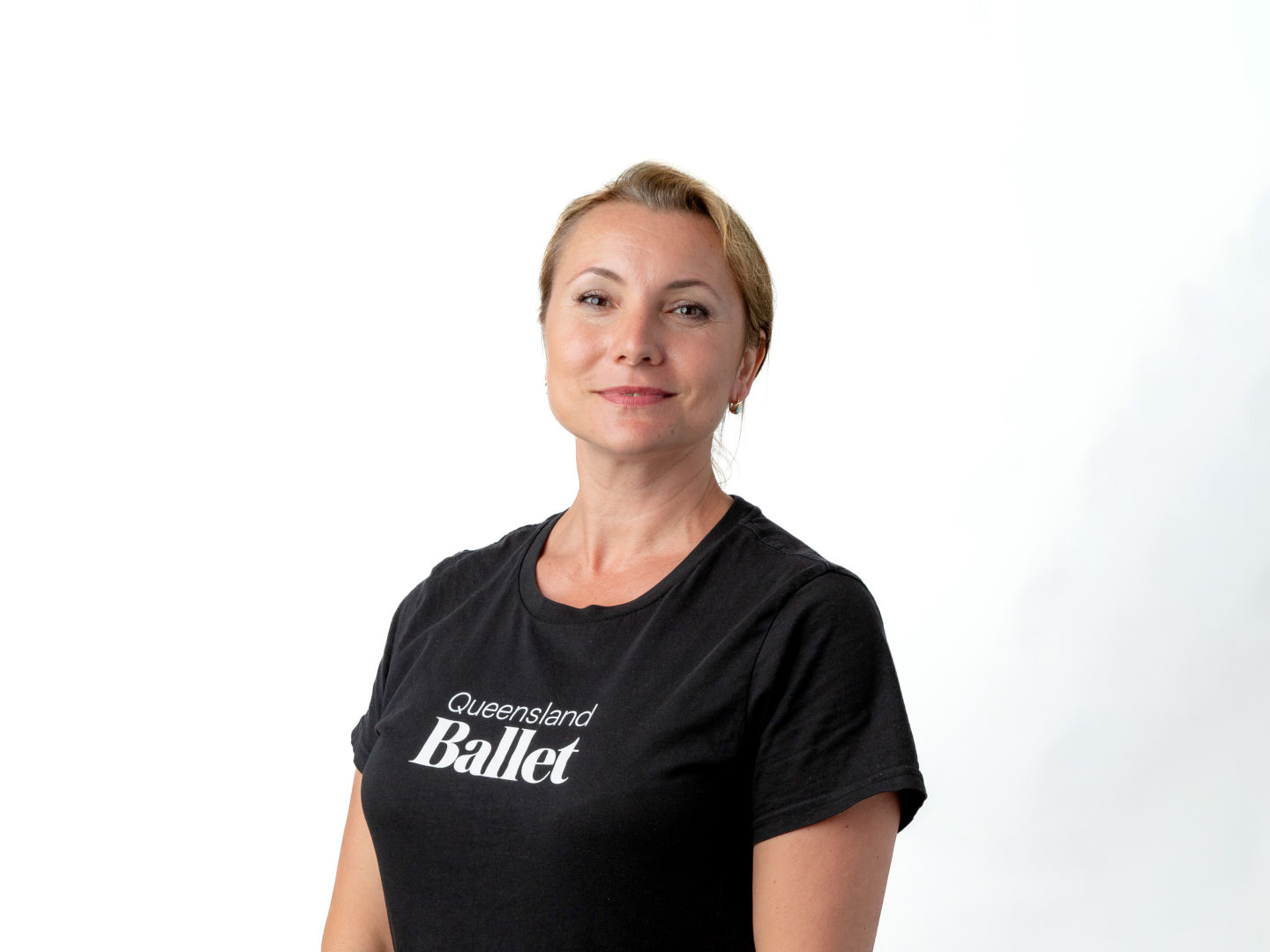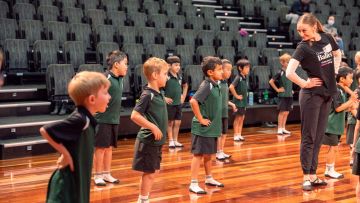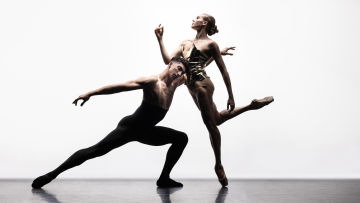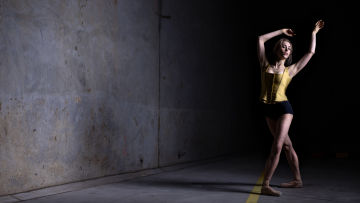Q&A with Head of Academy Program (Lower School), Veronika Sheremetieva

There’s a slow, simmering magic in nurturing a young dancer from the ground up, and Veronika Sheremetieva, known affectionately around Queensland Ballet Academy as Miss Nika, has a passion for it. The Head of Lower School develops the Academy’s youngest cohort of Grades 7, 8, and 9 students, ensuring their training is both proficient and holistic as they develop their skills through professional dance training whilst caring for their greatest assets: their mind, body, and health. We spoke with her about new programs, passions, and how the Academy prioritises wellbeing.
From your first ballet school in a tiny town north of Siberia, to professional training in Baku, Azerbaijan, to teaching in the UK and now in Australia, you’ve had an incredible career! How do you utilize your knowledge and experience to develop Academy’s youngest dancers?
Our students learn early on how to manage their academic and dance training workload and how to develop the skills to look after themselves because, at the end of the day, they will be employed because how strong their bodies and minds are, and how reliable they are. I’m also passionate about our students learning ballet history and developing knowledge of the art form in general to broaden their horizons and their job options. All students develop differently, and some are passionate about the purity of classical, and some develop more contemporary versatility, so we keep that in mind.
Favourite aspect of your job?
I really enjoy watching the students’ transformation, seeing them mature and grow up to be good human beings. I think it’s a sort of slow, simmering magic. You don’t see that transformation over a second with a magic wand – no-one is turning from pumpkin to carriage overnight, but over time it’s amazing to see them develop, and not just as dancers, but as good people too.
Last year, you launched the new Foundation Program for children from Grades 3 to 6. Where did the idea come from?
I know how difficult the after-school care programs are to navigate, so I thought we could start an Academy program where kids can come to learn about ballet. I think in general, ballet is such a beautiful art form and to grow up surrounded by music and movement is beneficial to any child whether they want to be a professional dancer, or to stay active and become a little bit more culturally engaged. It’s enriching. We are ultimately nurturing a new generation of ballet lovers and audiences who enjoy going to the theatre.
How many students have you helped develop into Company Artists at Queensland Ballet?
In Term 1 we took our students to watch some Company classes and rehearsals and I caught myself counting the dancers in the room and how many of them went through Academy. It was a big percentage! I think I had taught at least half of them at some point in time. It’s very rewarding.
Which style of dance are you most passionate about?
I like works where the story is reflected in the music. It’s when you get lost in seeing the bigger picture and all the puzzle pieces fit together, and the music speaks to you through the dancers’ movements: that’s when you know the choreographer has been successful in drawing the audience in and captivating the emotion, and you know others in the audience will walk away with that feeling.
What inspired you to join Academy in 2017?
I was teaching on the Gold Coast when I was introduced to Academy faculty members who had been trained in the Vaganova Russian method as I had: Mr Li Cunxin, Mr Christian Tátchev, and also Ms Elena Kozhemyachenko. We shared that similar education path, and have similar values and passions, so we are a likeminded team. It was even more exciting to meet the rest of the creative team with a passion for nurturing talent. I was thrilled to receive an invitation to join the Academy.
How does the Academy maintain its focus on student wellbeing?
We have a great health team and Nicola (Academy Wellbeing Manager) plays a huge role in how our students deal with their everyday workload from looking after their bodies as instruments but also learning how to recover and the importance of sleep, especially with academics and assessments and exams. It’s great that we have specific people who give the students tools to manage the stress, because life in general is unpredictable and they are learning early on how to look after themselves and balance the important things.
Best thing about living in Brisbane?
It reminds me a little of my childhood hometown Baku which is on the Caspian Sea. Brisbane is very warm and laidback, and I like that the people here are welcoming and interested in what you can do rather than where you’re from. I have found that Queenslanders in particular give people chances and there are a lot of opportunities here. Plus of course, the beaches are beautiful. It’s a beautiful state.
What would you say to young readers or their parents considering Queensland Ballet Academy?
I would absolutely recommend young dancers to join the Academy. You’ll benefit from how many people here look after each student individually, but I think also being surrounded by likeminded students with big dreams is inspiring. You’re growing up in a family-like environment, with one common passion in mind and it’s beautiful – most of the students here will end up working together and dancing as partners, so the earlier you get to meet your people, the better.
By Cassandra Houghton
#Related

Media - Press Releases
Queensland Ballet Education Programs 2026 Learning through Dance

Media - Articles
2025 Wrap Up

Media - Press Releases
